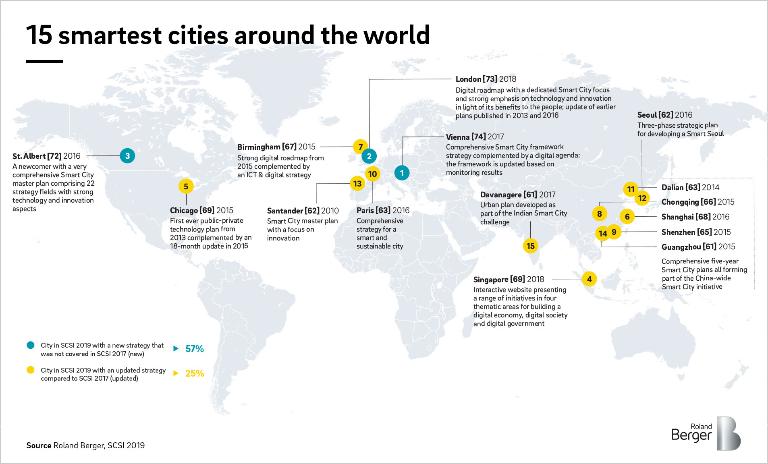In mid-sized cities “Smart City” concepts have high priority – but strategies are still missing.


SMART CITIES

Smart City Technologies Must Serve the Strategy. Not vice versa.
"With the topic Smart City we are facing a turning point. I assume that in the next five to ten years major global progress will be made."
Today throughout the world every second person lives in cities, any by 2050 it will be around 70 percent of the world’s population. This development not only involves enormous burdens for infrastructure and the environment but also places high demands on the conception and organization of coexistence in urban habitats.
The Smart City will precisely address these issues. Here digital technologies should help to cope with economic, social and political challenges facing current and future generations, for instance in the areas of environment and resource consumption, population growth and demographic change .
Technologies thereby play an important role. However, the right strategy provides the starting point for a Smart City. Centralized coordination, involvement of the relevant stakeholders and partnerships are some of the additional factors for success. Many metropolises and local authorities still lack the know-how and capabilities for successfully implementing their strategies.
Urban administrations rely on the support of competent partners for implementing their Smart City strategies. In particular, Europe’s medium-sized cities (between 100,000 and 500,000 residents) hence constitute an interesting market for communal companies, such as public utility companies and local energy companies : In Germany alone the annual budget for investments in Smart City infrastructure is around four billion euros.
No Smart City is the same as the others. Whereas in Vienna the topics mobility, health or open access to administrative data are in the foreground, in Songdo International Business District in South Korea the prime focus is on comprehensive networking of residents.
What does it feel like to live in such a city? One inhabitant reported that if she forgets her handbag and leaves it on a park bench, there is little reason to worry. In contrast, she finds it considerably more difficult to get used to camera surveillance in her own apartment.
Managing the unknown? Challenges keep us alive and alert.






